History
The first Catholic parish in our area was St Anthony’s at the junction of Howard, High and Canton Streets, Canterbury, that was opened in 1894. In 1911 St Mel’s, in the adjoining suburb of Campsie, was established. In 1905 the Canterbury priests began celebrating Mass in Bradburns Hall in Belmore. On 12 May 1907, St Joseph’s Church was opened at a cost of £760 in Wilson Avenue, Belmore, serviced by the priests at Campsie.
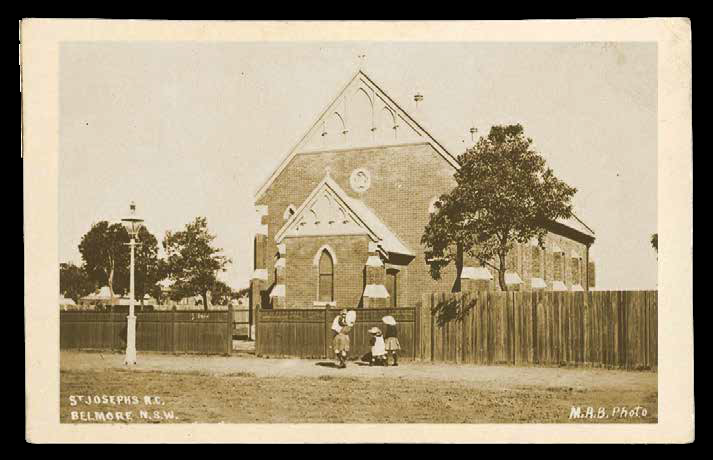
Additions to the Church were made in 1916 at a cost of £550. In December 1919, Fr Denis Conaghan was appointed as first priest in charge of St Joseph’s, Belmore. He was officially appointed as Parish Priest on 17 January 1919. On 4 February 1920, he Wrote from “Thormond,” Godfrey St Belmore, to Archbishop Dr M. Kelly asking permission to establish a school. He noted there were 236 schoolage children in the district. He would invite the Sisters of St Joseph to teach in the school. At first they would reside at Campsie until he built a convent for them in Belmore. The school began in 1921 in the Church, with 208 children in three classes, two in the body of the church, and infants in the choir gallery. The first three teachers were Sr Leonard, Sr Brigid and Sr Scholastica. Mrs Marge O’Brien, who resided for a long time in Reginald Avenue, Belmore, began school here in 1922. On 1 December 1922, the new presbytery was opened in Wilson Avenue.
The convent was built at Canterbury Road in 1923. An old shop on Canterbury Road was being used for some classes at this time. On January 1926 a new school was opened beside the church by Archbishop Kelly at a cost of £3000.
In that year a church was also built at Lakemba. Mrs Myola Mitchell began at the school in 1928 and some of the teachers she remembers at this time were the principal, Sr Aquinas, and Sr Gabriel. In 1929 an infants school began at the Lakemba site with 193 children, leaving 292 at Belmore. Kevin and Jean Stewart, who came to St Joseph’s School in 1933, remember Sr Benedict, the principal, allowing the children to go to the corner shop after showing her their pennies to spend. Other teachers were Sr Anthony, Sr Allen and Sr Syred.
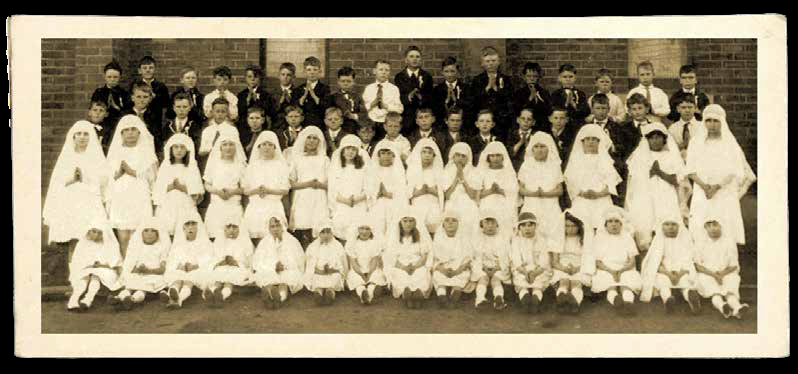
On 7 February 1935, Fr Michael Sheehy was appointed as the first Parish Priest of the new parish of St Therese, Lakemba. His parish school then had 415 children. In the same year another section was added to St Joseph’s School at a cost of £950. In 1936 there were 316 pupils at St Joseph’s and another floor was added to the building at a cost of £4500, and the bottom floor functioned as the second Church. Meanwhile the teachers had to carry on their job through all the noise, a situation paralleled a number of times afterwards. Some classes were conducted in the Scout Hall on Burwood Road. In 1937 the sisters and the priests exchanged residences – the presbytery became the convent, and the convent the presbytery.
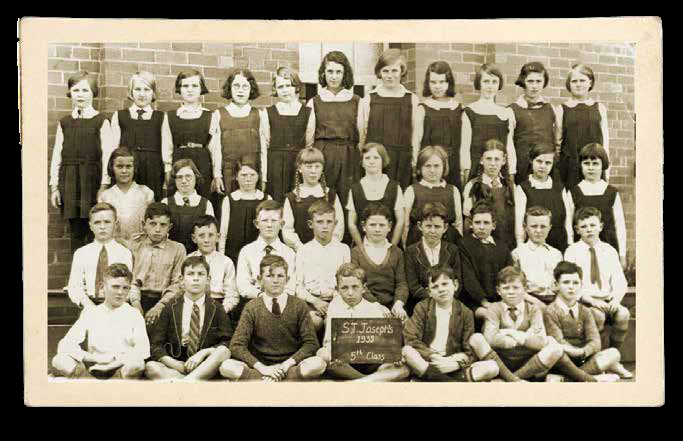
In April 1939, Fr Conaghan was transferred to Maroubra and the next month Fr John McCarthy was appointed Parish Priest. He was here during the Second World War. In 1943 he had the Church and the outside of the convent painted. Brian Payne recalls that in 1946 Sr Carmel was the principal of the school. In the 1950s Fr John McCarthy realised the need for a new Church, which would also give extra space to the school, and on 4 April 1954, the foundation stone was laid for the new Church on Canterbury Road. A new presbytery was built at the same time. Fr John McCarthy died in December 1955, and his brother, Fr Maurice, became the new parish priest in February 1956.
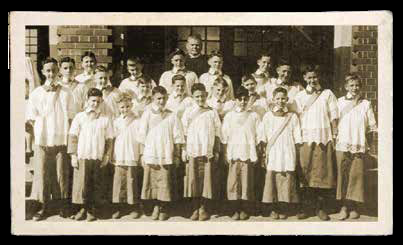
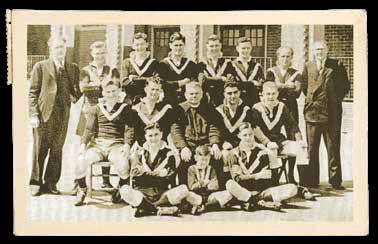
On 6 October 1957, the new church was officially opened. A verandah was added to the old church/school building, and the bottom floor set up with classrooms. Housie was conducted in the upstairs hall. Fr Maurice died in December 1965, and in February 1967, Fr Henry (Mick) Slattery was appointed Parish Priest. On 10 September 1967, a new school was opened by Bishop Muldoon on the site of the first church, which had been demolished. It cost $30,000. There were two classrooms, a tuckshop and a teachers’ room as on the ground floor and an assembly hall with parquetry flooring and one classroom on the first floor.
In 1974 the old convent (the former presbytery) was demolished and a new one built and opened in January 1975. Fr Slattery moved to Maroubra in December 1974, and in January 1975, Fr John Lyne was appointed Parish Priest. On 25 July 1976, a new primary school was opened and blessed by Cardinal Freeman. The school now had 450 pupils. In November 1978, Housie moved to the downstairs hall. On 5 October 1986, a new administration block and further extensions were opened and the upstairs hall was renovated and dedicated to the McCarthy brothers, who did so much to develop the parish. The last sister, Sr Maria Harrex, left the school at the end of 1986. The first lay principal Miss Fran Williamson was appointed in 1987. Fr Bob Hickman was appointed Parish Priest in January. From 1997 the whole school was redesigned and basically rebuilt. A new administration block was added, and the very old toilet block behind the infants school demolished. Undercover access was provided from one school building to the other, and a new fence was built. The cost of the project was in excess of $2,400,000. The parish received its first ever government financial assistance for the building — a federal government grant and state government interest subsidy.
The generosity of the parishioners over the years who so graciously gave their money and assistance to the building of the parish and the school is truly amazing. Not forgetting the Housie. The workers at one of the oldest Housies in Sydney contributed greatly to the building and upkeep of the parish. The new school was opened and blessed by Cardinal Edward Clancy on 30 August 1998. In 2009 St Joseph’s Primary School became part of Australian Government’s Building the Education Revolution (BER) program and received just over $2 million as well as the National School Pride (NSP) program which provided funding of $150,000. These two grants allowed St Joseph’s to install water tanks, complete an ICT upgrade, improve the garden areas on the playground purchase six smart boards, build an Early Learning Centre for Year 1, refurbish the administration office and the multi-purpose school halls. These projects were blessed by Fr James Collins SM and opened by the local federal member, The Honourable Tony Burke MP on 22 July 2011.